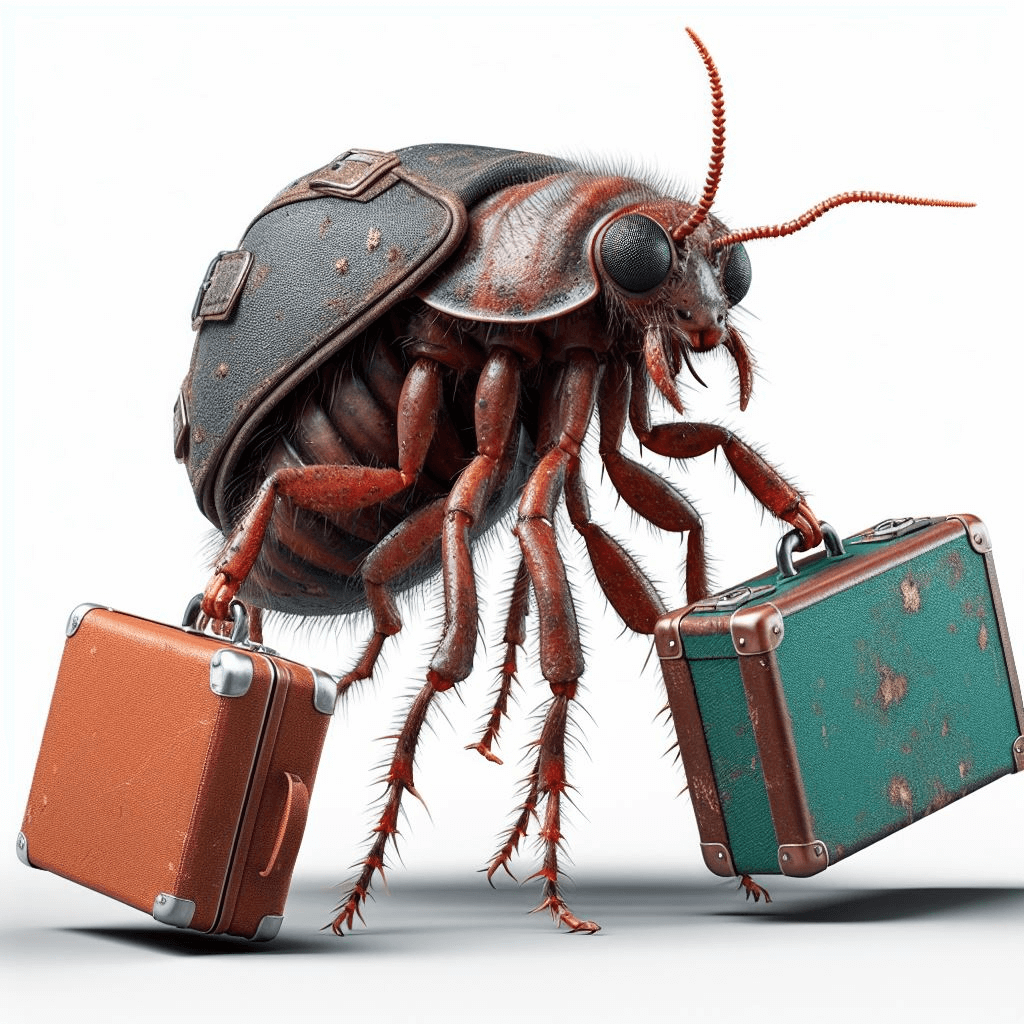Picture this: You’re all set for a weekend camping trip with your furry friend, ready to explore the great outdoors, breathe in the fresh air, and revel in the beauty of nature. But amidst all the excitement, there’s one crucial aspect that often gets overlooked—flea prevention. Yes, those minuscule creatures that can wreak havoc on your pet’s health and happiness.
Fleas are more than just annoyances; they pose significant risks to both our four-legged companions and ourselves. Flea prevention during travel and outdoor activities is of paramount importance to ensure the well-being of our pets and maintain a pleasant environment for everyone involved.
Unwanted Hitchhikers: The Risks and Consequences of Flea Infestations
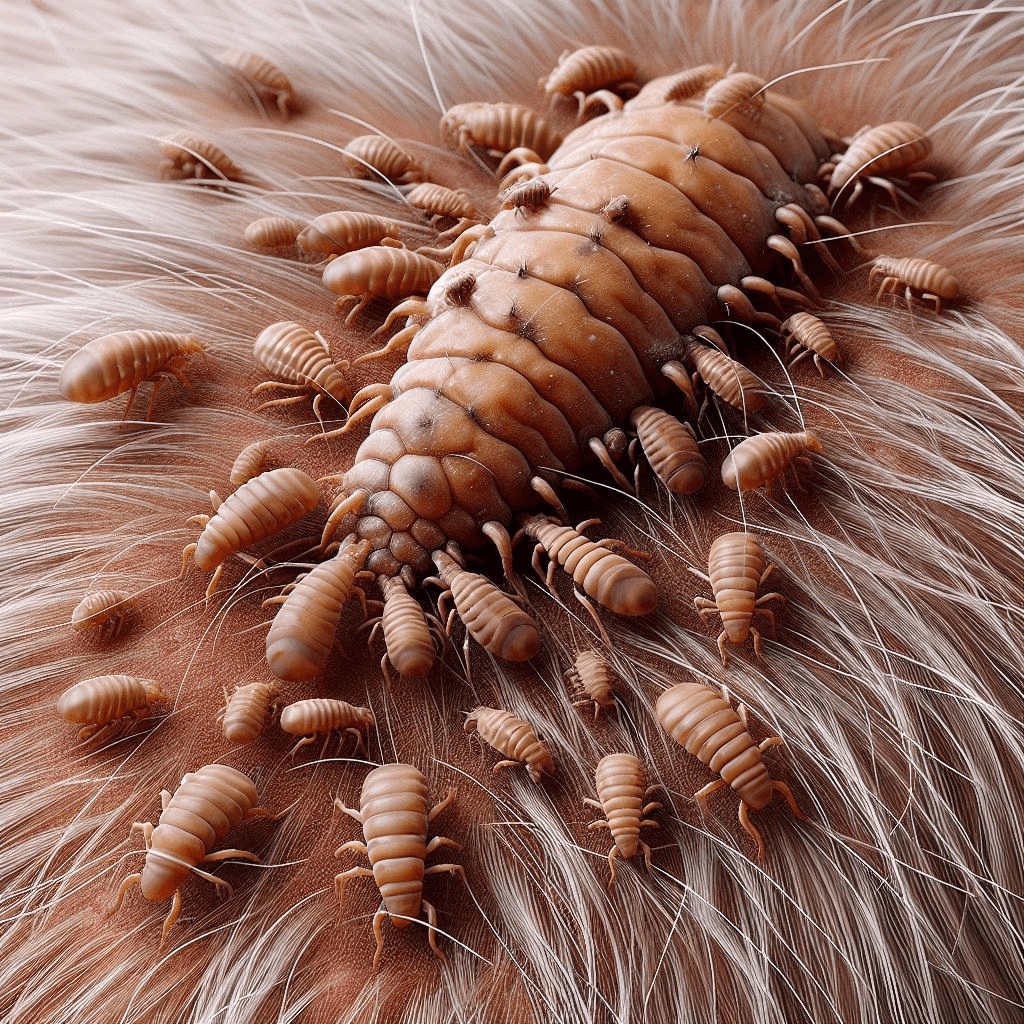
Flea infestations can quickly spiral out of control if left unchecked. Apart from causing incessant itching and discomfort for your beloved pet, fleas can transmit various diseases that may leave lasting consequences on their health. These blood-sucking insects act as vectors for parasites such as tapeworms or transmit bacterial infections like Bartonella, commonly known as “cat scratch fever.”
But it doesn’t stop there. Fleas are opportunistic creatures that won’t hesitate to latch onto humans too!
Once they make their way into our homes through our unsuspecting pets, they can multiply rapidly, infesting carpets, furniture, bedding—you name it! Before you know it, you could be dealing with a full-blown flea infestation that requires rigorous pest control measures.
Trust me; nobody wants to spend their time vacuuming endlessly or running desperate errands to wash every fabric in sight. Prevention is undoubtedly more manageable than trying to exterminate an existing flea population.
By taking proactive measures and following a few guidelines, you can keep your pet flea-free and minimize the risks associated with these pesky critters. So, let’s delve into the world of flea prevention during travel and outdoor activities and equip ourselves to combat these relentless insects effectively.
Brief Overview of Fleas and Their Life Cycle
Fleas, those tiny blood-sucking creatures that seem to have a knack for making our pets’ lives miserable, are more than just annoying pests. Understanding their life cycle can be the key to effective prevention and control.
So, let’s delve into the world of fleas! Fleas belong to the order Siphonaptera, and there are over 2,000 known species of these minuscule troublemakers.
The most common species include the cat flea (Ctenocephalides felis), dog flea (Ctenocephalides canis), and human flea (Pulex irritans). While their preferred hosts may vary, these crafty insects can infest a wide range of animals – from feral cats roaming the streets to our beloved dogs and even humans!
The life cycle of fleas consists of four stages: egg, larva, pupa, and adult. Adult female fleas lay their eggs on their host after a blood meal—usually your furry friend’s delicious blood!
These eggs then fall off onto various surfaces such as bedding or carpeting. Within 1-12 days, depending on environmental conditions like temperature and humidity, the eggs hatch into larvae.
These worm-like larvae feed on organic matter like flea dirt (dried blood from adult fleas) or other debris found in the environment. After going through several molting stages over a few weeks to several months, they cocoon themselves in silky cocoons known as pupae.
Common Species of Fleas Found in Different Regions
The prevalence of specific flea species can vary based on geographical locations and climate conditions. For instance: – In North America: The cat flea (Ctenocephalides felis) is by far the most common species found on both cats and dogs across the continent.
It thrives in warm and humid environments, making it a persistent nuisance for pet owners. – In Europe: The cat flea is also predominant, infesting both domestic and feral cats.
However, the hedgehog flea (Archaeopsylla erinacei) is more prevalent in rural areas where hedgehogs roam. – In Australia: The Australian paralysis tick (Ixodes holocyclus) is notorious for transmitting dangerous diseases to pets, and children, but fleas are still a common annoyance.
The most prevalent species include the cat flea alongside rabbits and the dog flea (Ctenocephalides canis). – In tropical regions: Fleas tend to thrive in warm and humid climates.
Species such as the oriental rat flea (Xenopsylla cheopis) and human flea (Pulex irritans) can be found, particularly in areas with poor sanitation. Understanding the common species of fleas in your region can help you tailor your preventive tick control measures accordingly, ensuring effective protection for both your pets and home.
Checking your pet for existing fleas or signs of infestation
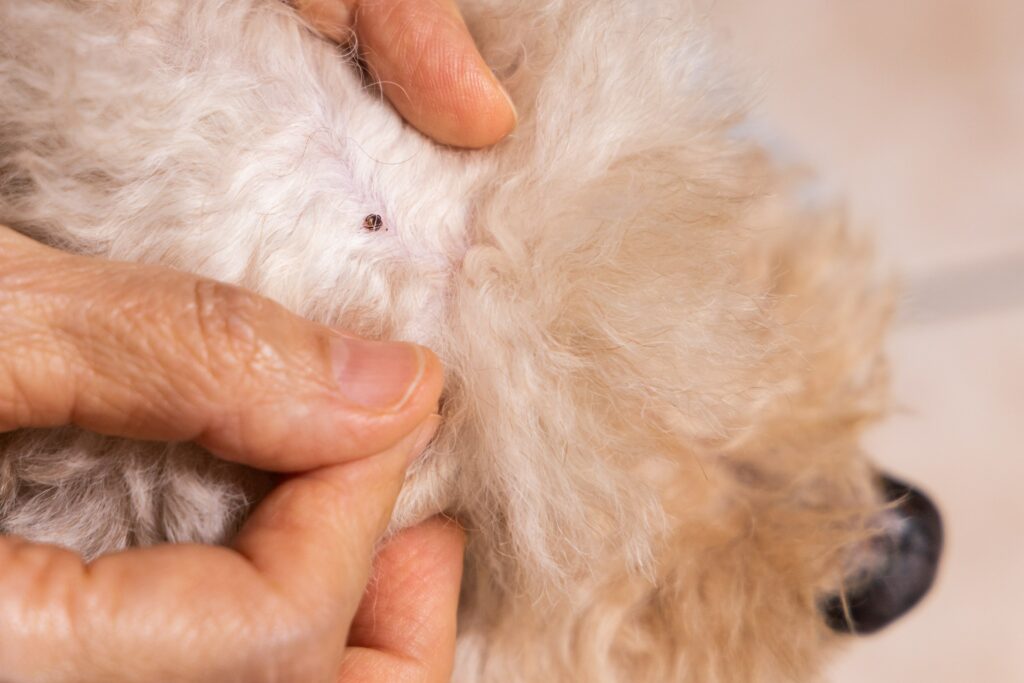
Before embarking on any travel or outdoor adventure with your cherished furry friends, it’s crucial to start with a thorough inspection. Checking your pet for existing fleas or signs of infestation is the first step in preventing an unwanted encounter with these pesky pests.
Take the time to carefully examine their fur, skin, and bedding for any telltale signs of flea activity. One clue that may indicate the presence of fleas is flea dirt.
These are tiny black specks that resemble pepper flakes and are actually dried flea droppings. You might find them on your pet’s skin or in their bedding.
Another indicator is the presence of flea eggs, which are small white oval-shaped objects that resemble grains of salt. If you spot either flea dirt or eggs, it’s a clear sign that you need to take action immediately.
Using a flea comb to detect live fleas or their bites
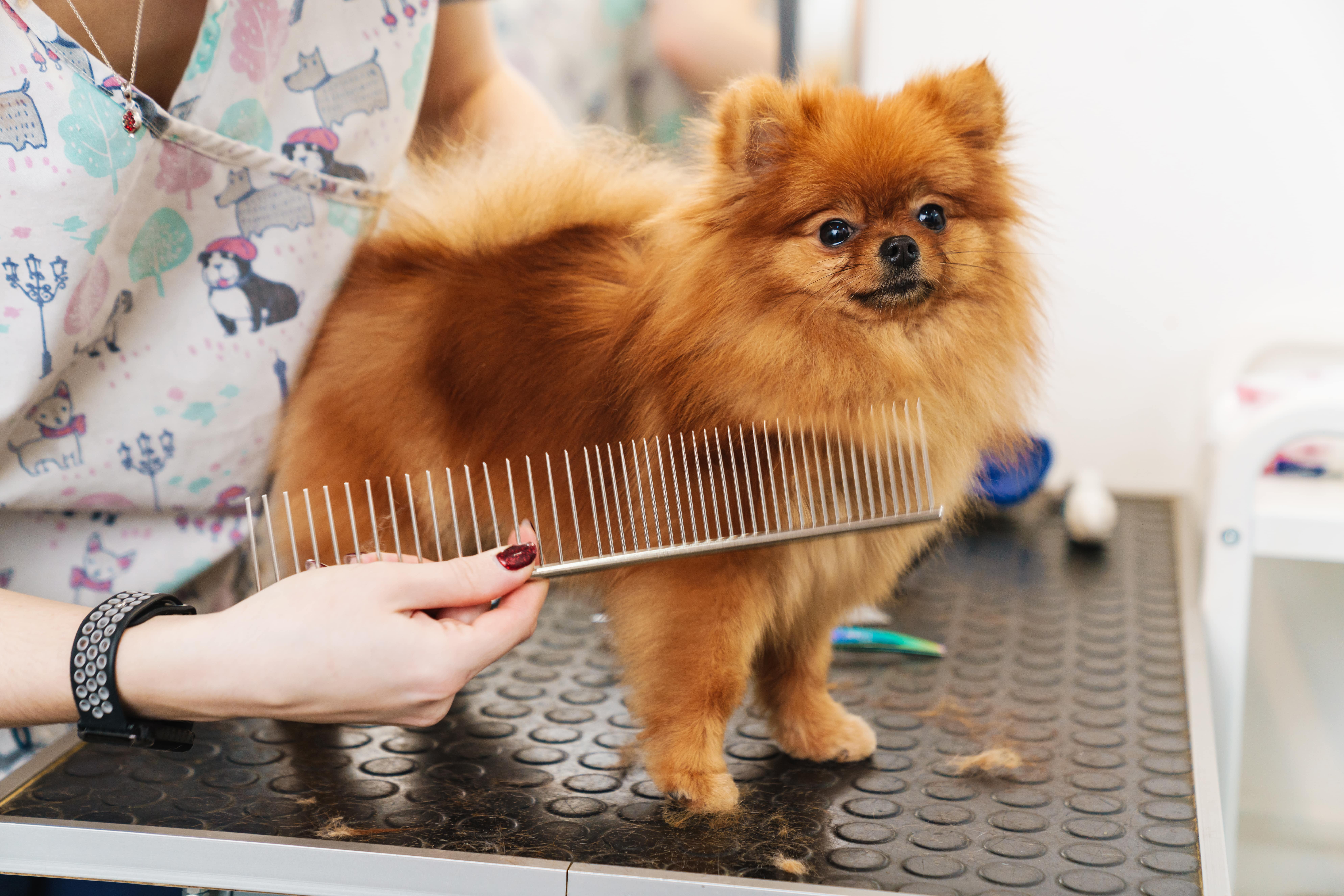
To further enhance your inspection process, consider using a specialized tool like a flea comb. These combs have fine teeth that can catch and remove adult fleas as well as detect any bites they may have left behind on your pet’s skin. Start by running the comb through your pet’s fur, paying close attention to areas where fleas commonly hide such as around the neck, underbelly, and tail base.
If you come across live fleas during this treatment process, it’s important not to panic! Simply remove them from your pet using tweezers or by drowning them in soapy water.
Also, be attentive to any red marks or bumps on their skin which could be signs of recent flea bites. Remember though, that not all pets show obvious signs of irritation from flea bites like humans do.
Once you’ve completed the inspection and confirmed whether or not your pet has fleas, it’s time to take appropriate preventive measures. There are several options available to control fleas, such as topical spot-on treatments and oral medications that target fleas specifically.
Topical treatments, which usually come in the form of a liquid applied between your pet’s shoulder blades, contain insecticides or growth regulators that kill fleas and ticks on contact or prevent them from reproducing. On the other hand, oral medications can either kill adult fleas or inhibit their reproduction by targeting their life cycle.
Remember to consult with your veterinarian for guidance on selecting the best flea treatment and prevention method for your pet based on their specific needs and lifestyle. Taking these pre-travel preventive measures will help ensure a flea-free journey for both you and your furry companions, allowing you to fully enjoy your time together without worrying about these troublesome pests hitching a ride home with you.
Choosing the Right Products for Flea Prevention
When it comes to flea prevention, collars are a popular choice among pet owners. These collars are infused with insecticides or repellents that help ward off or kill fleas.
They are easy to use and provide long-lasting protection. Simply attach the collar around your pet’s neck, and the active ingredients will gradually release over time.
One of the advantages of using flea collars is their effectiveness in repelling fleas from your pet’s fur. The insecticides or repellents in these collars create a barrier that keeps fleas away, reducing the likelihood of infestation.
However, it is essential to choose a collar specifically designed for your pet’s species and size. Consult with your veterinarian to ensure you select the most suitable option for your furry friend.
If you’re looking for immediate relief from fleas on your pet’s coat, then shampoos, sprays, powders, and dips can be effective solutions. These products contain active ingredients that kill existing fleas on contact. Shampoos formulated for flea control are designed to cleanse your pet’s fur while simultaneously eliminating fleas or any pests present.
Sprays offer convenience as they can be directly applied onto your pet or used in their living environment – such as outdoor spaces or bedding – to treat and prevent re-infestation. Powders can be sprinkled onto carpets or bedding where fleas thrive and then vacuumed up after a specific period of time has passed to eliminate them effectively.
Dips are more potent solutions that need dilution before application and provide extended protection against future infestations. While these products provide immediate relief by killing adult fleas on contact, they may not have long-lasting effects compared to other preventive measures.
Additionally, it is crucial to follow the instructions on the product labels carefully to ensure safe and effective use. Some shampoos, sprays, powders, or dips may not be suitable for certain animals or may require reapplication after a specific period.
Oral tablets have gained popularity as a convenient and efficient method of flea prevention. These tablets contain ingredients that disrupt the flea’s life cycle by inhibiting their reproduction or killing them upon ingestion. One of the significant advantages of oral tablets is their systemic action.
Once your pet ingests the tablet, it is absorbed into their bloodstream and reaches all parts of their body. This means that even areas difficult to reach with external treatments are protected from fleas.
The active ingredients interfere with flea development, preventing eggs and larvae from maturing into biting adults. While oral tablets offer comprehensive protection against fleas, they do require a prescription from your veterinarian.
It’s important to consult with your vet before administering any oral medication to ensure it is safe and appropriate for your pet’s specific needs. Some common side effects may include mild digestive disturbances which typically resolve on their own.
Ultimately, when choosing a product for flea prevention during travel and outdoor activities, consider factors such as effectiveness against fleas at different stages of their life cycle, duration of protection provided by each product type, ease-of-use in different situations (e.g., while hiking or camping), as well as potential side effects specific to each option. Your veterinarian can provide valuable guidance tailored to your pet’s individual needs ensuring you make an informed decision that will protect them effectively from these pesky parasites while enjoying outdoor adventures!
Traveling Tips to Avoid Flea Infestations
When it comes to traveling with our furry friends, it’s essential to take some extra precautions to ensure a flea-free journey. The last thing you want is for your vacation getaway or business trip to be marred by an unexpected encounter with these pesky critters. To protect your pets and yourself, here are some essential tips to follow while staying at accommodations:
Inspecting hotel rooms or rental properties for signs of fleas before settling in.

Before unpacking your bags and getting comfortable, take a few minutes to carefully inspect the room or rental property. Start by checking the areas where fleas are most likely to hide, such as corners, cracks, and dark spaces. Look out for telltale signs of a flea infestation like flea dirt (small black specks resembling ground pepper) on bedding or furniture.
Additionally, keep an eye out for any jumping insects – fleas are notorious little jumpers! If you notice any of these signs, request a different room or property immediately.
Carrying a portable vacuum cleaner to clean carpets and upholstery.
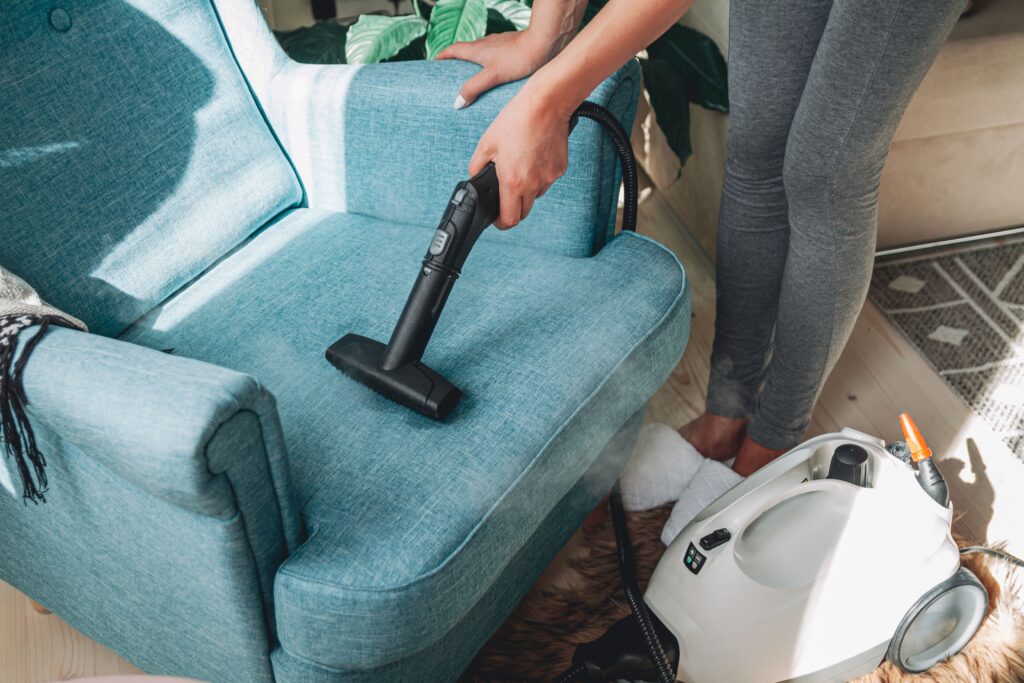
An effective way to tackle potential flea problems in-house is by bringing along a portable vacuum cleaner. Use it as soon as you arrive and give special attention to carpets and upholstery where fleas might lurk.
Remember that fleas can survive in their various life stages within these soft surfaces until they find an opportunity for a blood meal from your pet or even a bite from yourself! By vacuuming regularly during your stay, you can help eliminate any lurking pests and prevent them from establishing themselves in the environment.
Washing bedding regularly during extended stays.
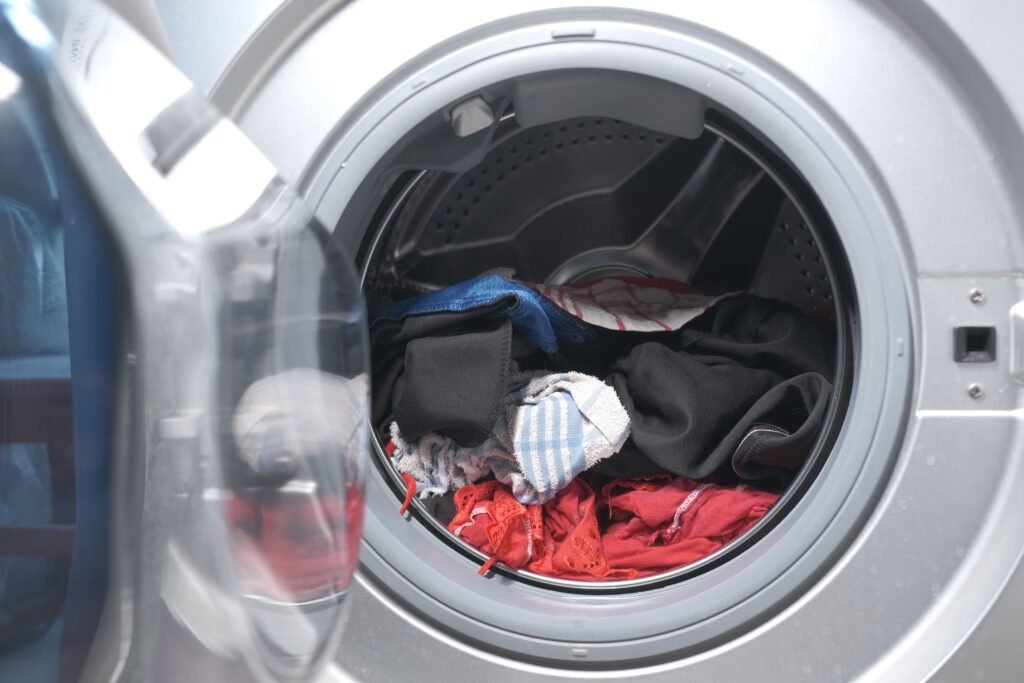
If you’re planning an extended stay at one location, it’s important to establish a routine for washing bedding. Fleas can easily hitch a ride on your pet’s fur or even your own clothes and end up nesting in the bedding. By washing the sheets, blankets, and pillowcases regularly in hot water, you’ll prevent fleas from making themselves at home and ensure a comfortable and pest-free sleep environment for both you and your furry companions.
Exploring outdoor areas safely:
While outdoor adventures are undoubtedly exhilarating, they also come with potential risks such as encountering fleas in natural environments. Don’t worry though; with some simple precautions, you can confidently enjoy the great outdoors without worrying about these pesky critters:
Protective clothing to prevent flea bites.
When venturing into areas prone to fleas, consider wearing long-sleeved shirts, long pants tucked into socks or boots, and hats to minimize exposed skin. This type of protective clothing acts as a physical barrier against fleas leaping onto your body or getting access to your pets’ fur. Additionally, applying insect repellents containing ingredients like DEET can offer an extra layer of protection against not only fleas but also other troublesome insects.
Fleas aren’t the only concern when exploring outdoor areas – ticks can also pose risks for both humans and pets. Apply tick prevention products specifically designed for your pet’s species before heading out on any outdoor walk or adventure.
For yourself, wear light-colored clothing that allows easy visibility of any ticks that may try to hitch a ride on you. After returning from excursions through grassy or wooded areas where ticks thrive, don’t forget to meticulously check yourself and your animals for these tiny intruders.
Conclusion
By taking proper precautions and following these tips while staying at accommodations and exploring outdoor areas, you can greatly reduce the risk of encountering fleas during your travels. Inspecting hotel rooms or rental properties, carrying a portable vacuum cleaner, and washing bedding regularly are essential steps to prevent infestations indoors.
When venturing outdoors, wearing protective clothing and using tick control measures not only keep fleas at bay but also protect against other potential nuisances. So don’t let the fear of fleas dampen your travel experiences!
With a little care and preparation, you can enjoy your adventures with peace of mind, knowing that you’ve taken the necessary steps to protect yourself and your furry friends from these tiny troublemakers. Stay flea-free and make lasting memories on your journeys!
Exterminate fleas with D-Termination: The top pest control service in Las Vegas!

If you’re contending with flea issues on your Las Vegas property, trust D-Termination for assistance. Our expert team excels in eliminating flea infestations and restoring comfort and peace to your space. Bid farewell to fleas—opt for D-Termination for effective pest control today!
Reach out to us at 702-919-6310 or visit dtermination.com to schedule your flea control service and reclaim your space from these bothersome pests.
Frequently Asked Questions:
To prevent fleas from traveling with you, use flea repellents, check for fleas on clothing, and maintain a flea-free environment.
Control fleas in the environment by regular vacuuming, washing pet bedding, using flea sprays, and treating pets with flea preventatives.
Humans can wear flea-resistant clothing, including long sleeves and pants, and use insect repellents containing DEET or essential oils.
Natural methods to control fleas outside include nematodes, diatomaceous earth, and planting flea-repelling plants like mint or lavender.
If this content resonated with you, you might derive satisfaction from exploring these related pieces:
Creating a Flea Prevention Routine
Importance of Regular Veterinary Check-ups for Flea Prevention

